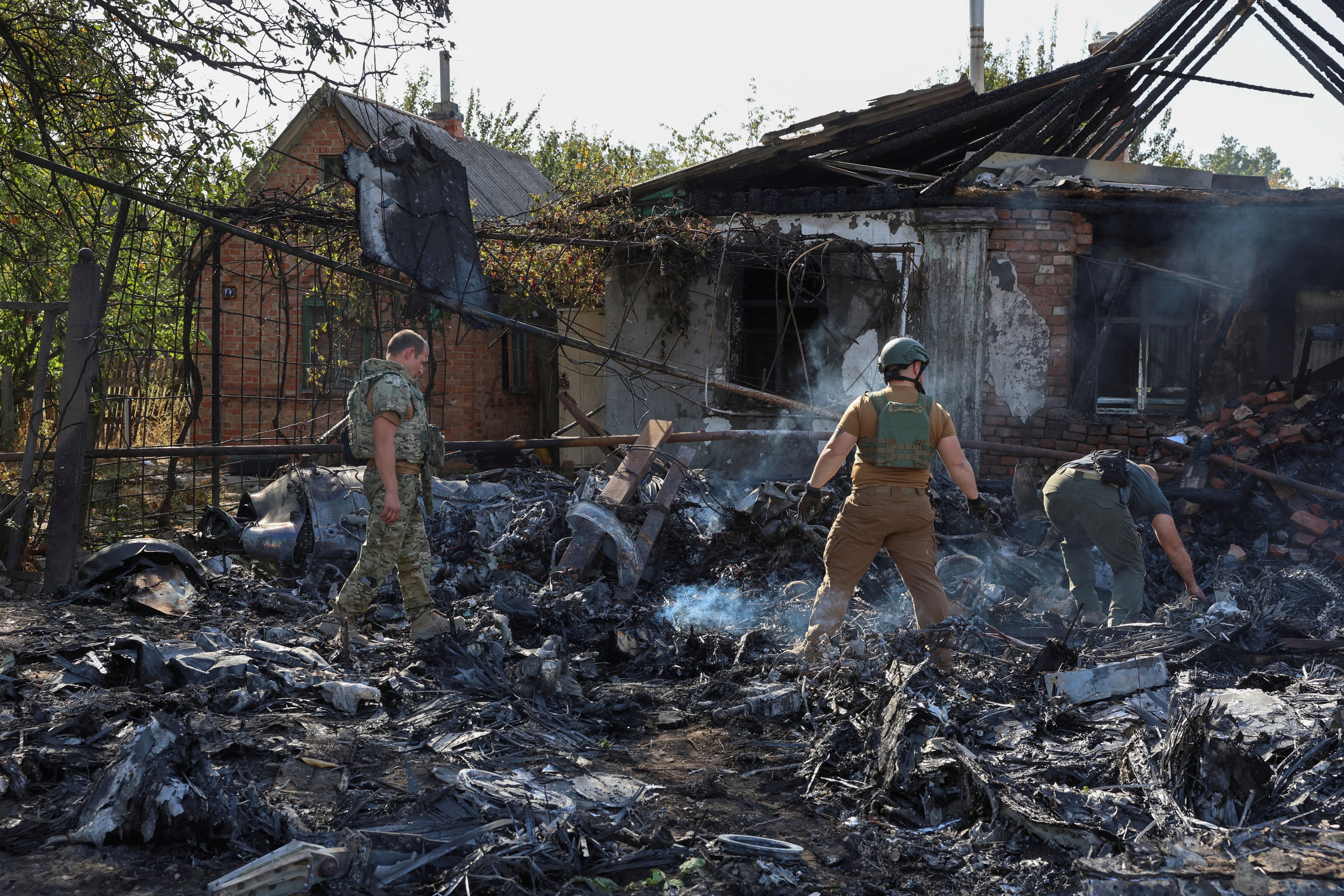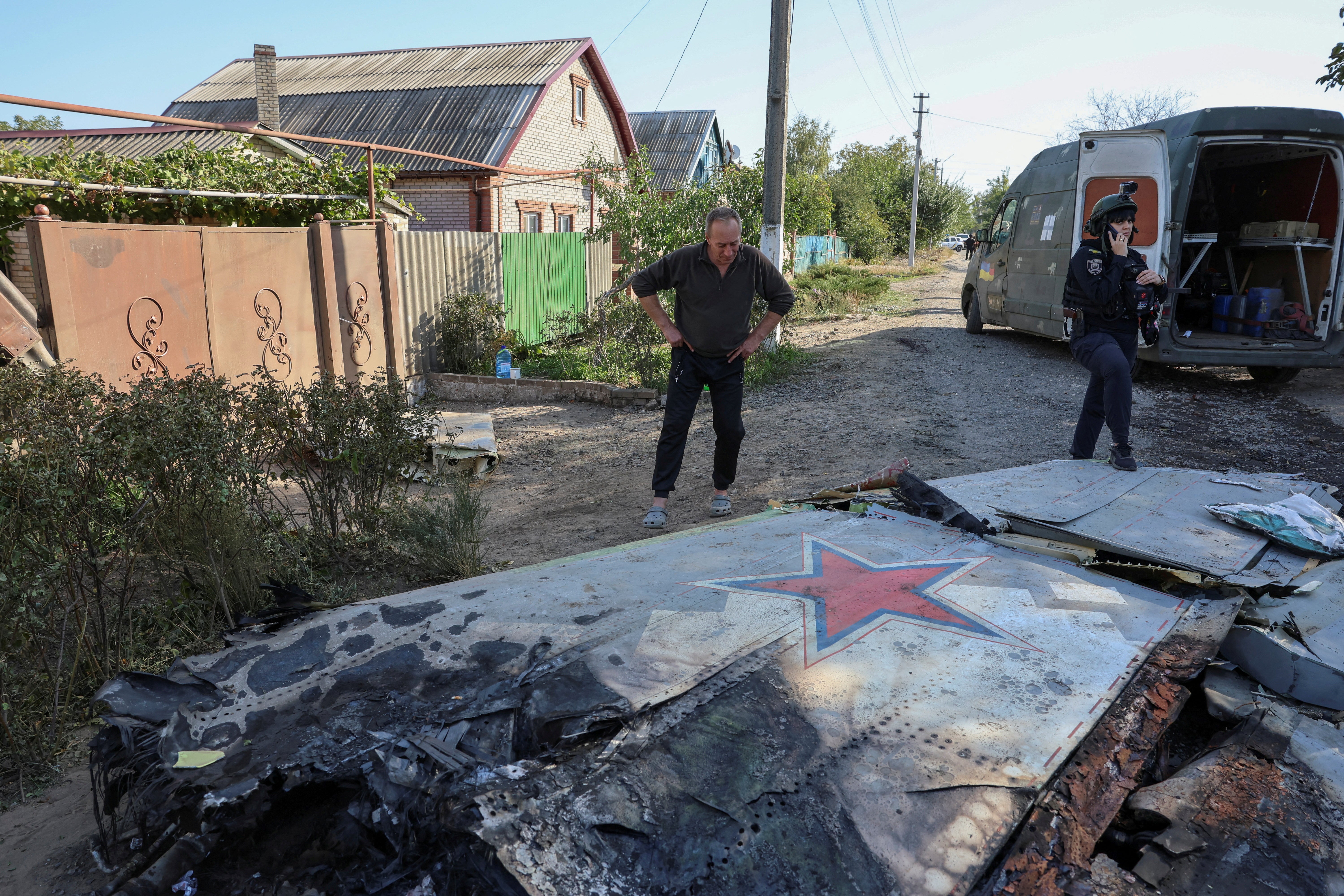Last week Russia’s air force was forced to shoot down one of its newest and most advanced models of attack drone, in an incident that is being seen as one of the biggest embarrassments ever suffered by the Russian Air Force.
On 5 October, videos showed a drone flying near Kostyantynivka in eastern Ukraine before it was shot down by another jet briefly flying alongside it. Initial reports suggested it was either a Russian jet taken down by the Ukrainian air force or a Russian jet losing control and being shot down by Moscow.
However, the drone that fell down was no ordinary weapon. It was later identified as a stealth S-70 Okhotnik-B, also known as “Hunter”, one of Russia’s most advanced stealth drones, designed to accompany an Su-57 fighter jet.
Reports suggest the drone malfunctioned, possibly due to Ukrainian electronic jamming, causing Russian forces to lose control over it. To prevent the in-tact drone from falling into Ukrainian hands, the Su-57 shot the drone down mid-air.
Soon after, Russian forces launched an Iskander missile at the crash site in an attempt to destroy any remaining wreckage.

However, videos suggest Ukrainian soldiers had already recovered key components from the wreckage, giving them and their Western allies a rare opportunity to study Russia’s latest drone technology.
The loss of the Okhotnik is a serious setback for Russia’s drone programme. If Ukraine’s experts can analyse the drone thoroughly, it could provide Nato and Ukrainian forces with crucial information to counter Russia’s aerial strategies in this and future conflicts.
Neither Moscow nor Kyiv have commented officially on what happened in the skies near Kostyantynivka.

The Okhotnik-B, or “Hunter”, under development since 2011, is an unmanned vehicle capable of carrying bombs and missiles while remaining under the radar, without putting manned aircraft at risk.
The drone is not believed to have a direct equivalent in other militaries. It is very large – weighing more than 20 tonnes, and is believed to have a range of 6,000km (3,700 miles). The drone was designed to carry up to 2.8 tonnes in its internal weapons compartments, according to development plans.
Until now, there was no evidence that Russia was using it in the two and a half year long war against Ukraine – partly because it uses highly effective stealth technology, making the aircraft much harder to detect. This is achieved by designing the craft to deflect radar waves and using special materials that absorb them.

The drone was expected to go into mass production this year, and so far only four protype S-70s are believed to have been built since 2019. Initial inspections showed some flaws in design including engine nozzles and visible rivets, both of which make it easier for radar systems to detect the drone.
It is possible that last week’s mission was Russia’s first Ukrainian deployment of its most sophisticated prototype so far – its failure would mean the the unmanned aircraft is not ready.
For Ukraine, the wreckage may carry crucial intelligence. “We may learn whether it has its own radars to find targets or whether the ammunition is pre-programmed with co-ordinates where to strike,” Anatoliy Khrapchysnkyi, a Kyiv-based aviation expert, told BBC News.

